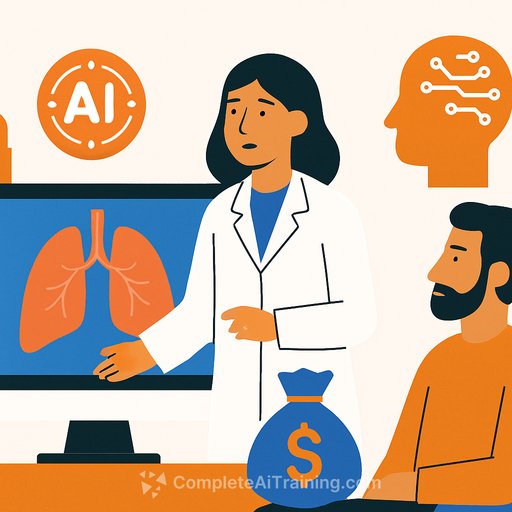Hong Kong to deploy AI lung cancer screening, fast-track therapies, and expand medical fee waivers
Hong Kong will introduce AI-aided screening to catch early signs of lung cancer and set up a new office to speed access to innovative drugs and devices. The health minister outlined a plan to tighten early detection, shorten approval timelines, and protect patients from financial strain as the city's population ages.
"Hong Kong will not see anyone unable to get appropriate treatment because of economic reasons," Secretary for Health Lo Chung-mau said.
AI-aided lung cancer screening: how it will work
Local universities will be commissioned to test AI-assisted screening technologies. The AI will provide a pre-judgment, while radiologists make the final call.
The push comes as life expectancy rebounded to record highs in 2024, the 65+ population reached 1.76 million, and annual hospital discharges rose 5.8%. Early detection is the lever that can bend future inpatient load and mortality.
Faster access to new therapies and devices
The Hospital Authority will establish the Office for Introducing Innovative Drugs and Medical Devices in the first half of 2026. The process has already reduced introduction times from about 10 months to five, with further gains expected.
Lo encouraged global manufacturers to register in Hong Kong quickly so frontline clinicians can use effective options sooner.
Affordability protections
The medical fee waiver system will expand from roughly 400,000 people to 2 million residents, including those receiving Comprehensive Social Security Assistance and Old Age Living Allowance. Patients with severe illnesses will face a HK$10,000 annual cap on medical expenses to prevent financial hardship.
Lo emphasized the intent: no one should slip into poverty because of a serious diagnosis.
Other public health measures
- Self-administered HPV tests to lift cervical cancer screening rates.
- A hospital "green channel" by Q2 2026 to improve support for older adults, pregnant women, and people with disabilities.
What healthcare teams should do now
- Radiology and pulmonology: Define inclusion criteria for lung cancer screening (e.g., smoking history, age bands). Set thresholds and escalation pathways. Plan double reading for edge cases and audit sensitivity/specificity monthly.
- Workflow integration: Connect AI to PACS/RIS with clear failover if the model is unavailable. Ensure outputs are structured, timestamped, and traceable to the model version.
- Clinical governance: Establish human-in-the-loop decision-making, document validation results, and monitor false positives/negatives. Create pathways for incidental findings and smoking cessation referral.
- Equity and consent: Provide plain-language patient materials describing AI use. Track uptake and outcomes by age, sex, and socioeconomic status to prevent gaps in access.
- Security and privacy: Enforce de-identification where feasible, access controls, and audit trails. Review vendor cybersecurity posture and data retention terms.
- Training: Run brief, repeated sessions for radiologists, technologists, and nurses on workflow, alert handling, and documentation. Align ICD and billing processes with the new fee cap policy.
- Measurement: Predefine success metrics: time-to-diagnosis, stage shift at detection, downstream procedure rates, readmissions, and patient-reported experience.
Timeline signals
AI screening pilots will be driven through local academic partnerships, with clinical oversight by radiology services. The new drug and device office targets the first half of 2026, while the "green channel" is slated for the second quarter of 2026.
Why this matters for care delivery
As inpatient volumes climb and the city ages, shifting cancer detection upstream is the most reliable way to protect capacity and outcomes. Pairing AI triage with clinician judgment can shorten time-to-treatment-if workflows and governance are solid from day one.
Resources
- NCI: Health professional guidance on lung cancer screening
- WHO: Ethics and governance of AI for health
Upskilling for clinical AI
If your team is building AI literacy for deployment and oversight, see focused programs by job function: Complete AI Training - Courses by job.
Your membership also unlocks:






